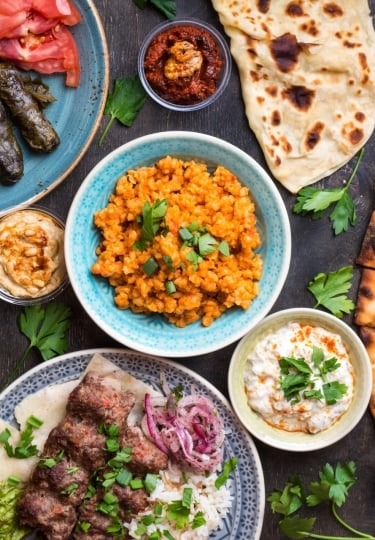Sitting at the crossroads of Europe and Asia and variously ruled by Ottoman and Byzantine powers, Turkey is a magnificent melting pot of flavors and influences.
Key to iconic dishes such as kebabs, kofte, and baklava are fresh, high-quality ingredients and bold, harmonious flavors. Whether served from street food vendors, in family restaurants, or high-end eateries, Turkish food is sure to tantalize the taste buds thanks to a blend of old and new, east and west, simple and sophisticated.
Many of the foods are steeped in legends, too, so whether it’s the story of the sultan who fainted, or the royal who awoke in the night and inspired a dessert based on chicken, these 20 great Turkey dishes are sure to capture both the imagination and the heart of even the most demanding gourmet.
Kebab
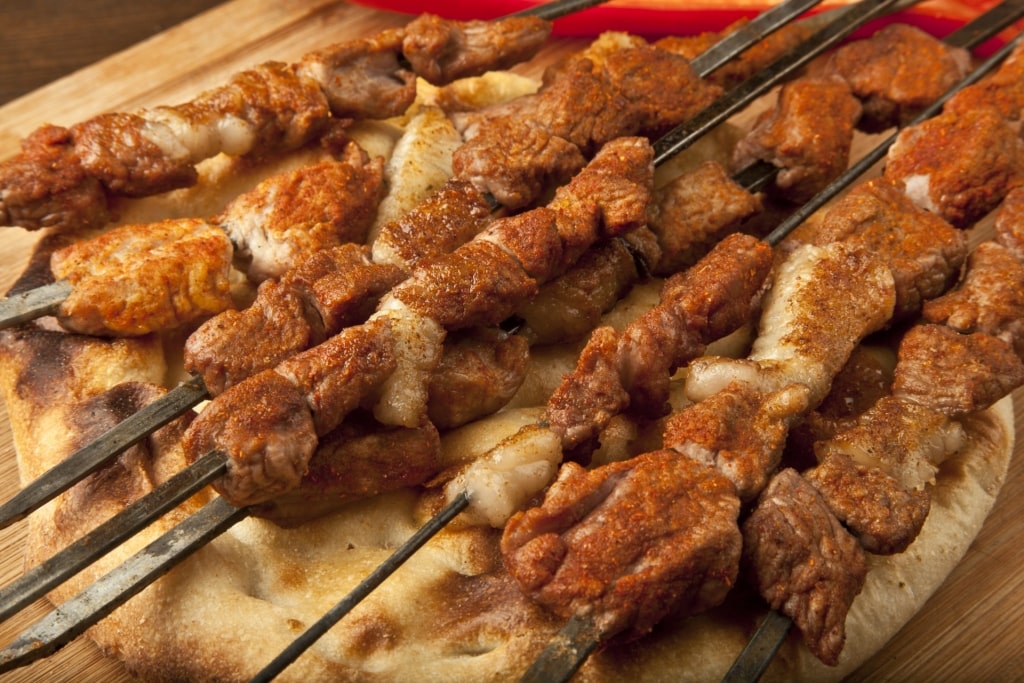
Shish kebab
With ancient roots dating from the medieval kitchens of Persia, kebabs, in their many forms, spread around the Near and Middle East thanks to the expansion of the Ottoman Empire.
Typically grilled or roasted and often on a skewer, kebab is now the archetypical Turkish food and can be made from lamb, beef, chicken, or even fish, often flavored with a yogurt-based marinade.
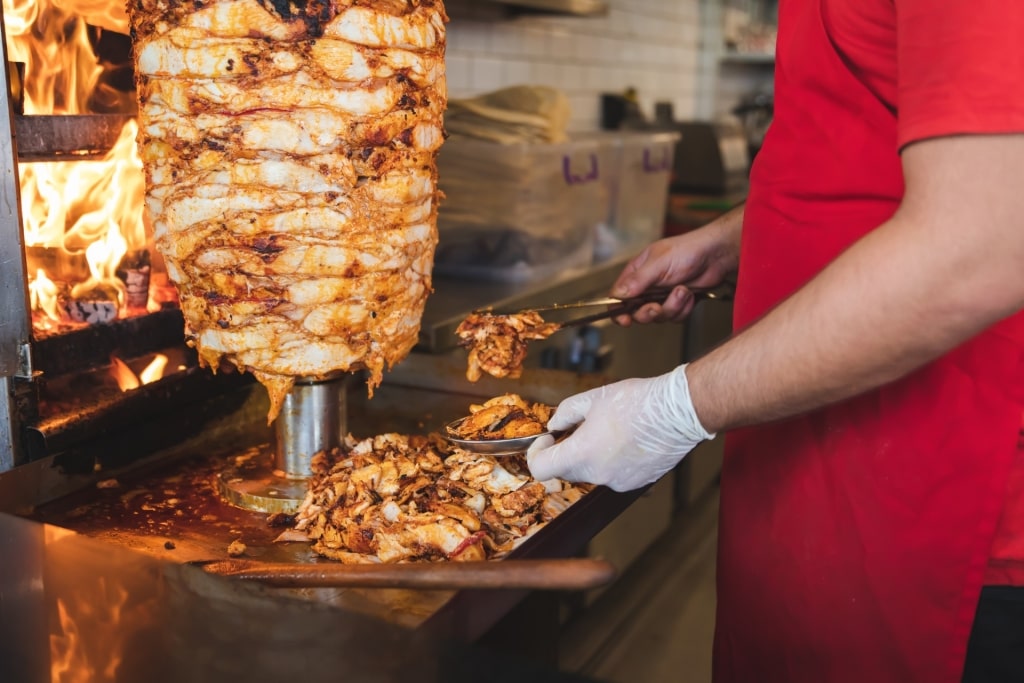
Doner kebab
Classic variations include shish, which is marinated meat cubes on skewers, and doner, where the meat is grilled on a rotisserie. Regional options include adana, made from spicy ground meat. Look out for restaurants with ocakbaşı in their name. It means “grill” and they tend to offer the best, most succulent options.
Read: What to Eat in Istanbul
Lokum
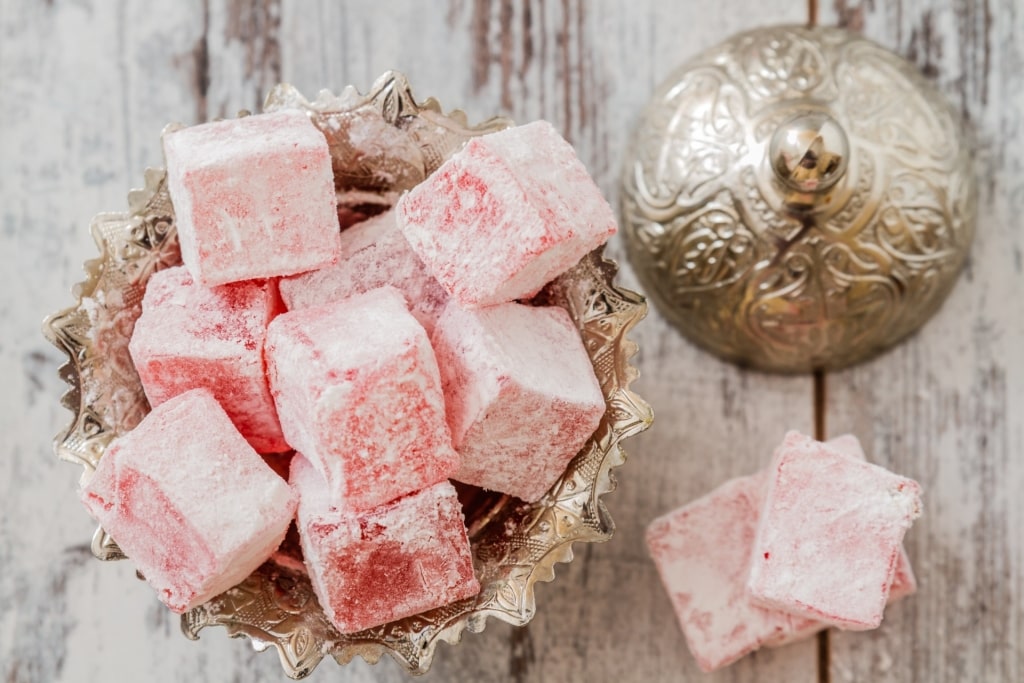
Lokum
A few blocks from the Spice Bazaar and just off the port area in Istanbul’s Fatih district lies one of the city’s enduring legends: Hacı Bekir, a confectioners dating from 1777 and the classic place in Istanbul to pick up lokum, or Turkish Delight, as it’s commonly known.
This gel-like candy, flavored with rose water or lemon and dusted with powdered sugar is still considered a delicacy in Turkey and is often given as a gesture of hospitality. You can find it around the country, but the Bekir outlet on Hamidiye Caddesi is the original shop and the best.
Bekir’s fame was so wide that he was made chief confectioner to the Sultan and his portrait can be seen in Paris’s Louvre gallery. The firm is still in the hands of his family several generations on, despite expanding to several locations around the city.
Read: Best Turkish Souvenirs to Bring Home
Baklava
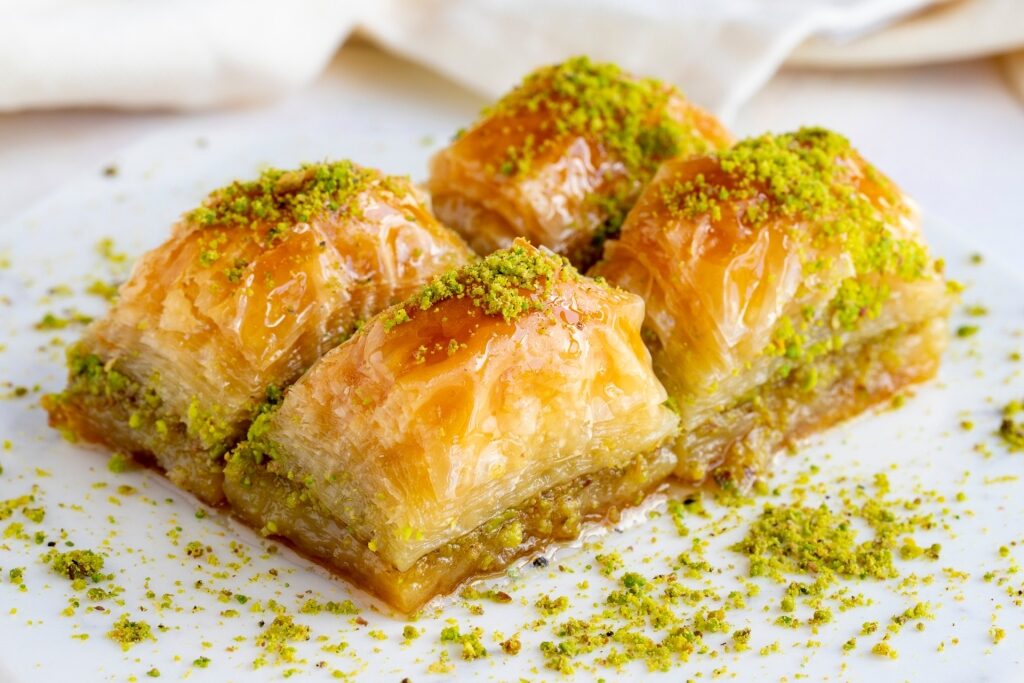
Baklava
Another classic sweet in any list of Turkey dishes is baklava, a rich dessert made with thin layers of crisp pastry filled with chopped nuts and sweetened with syrup or honey.
The origins of the dish are disputed but it’s thought baklava may have been developed in the imperial kitchens of the Topkapi Palace, located near Sultanahmet in Istanbul. It remains one of those Turkish foods served on special occasions such as Eid, or offered as a symbol of hospitality.
Preparation of the dish can take hours and that love and care shows in the final product. Check out Karaköy Güllüoğlu on Kemankeş Caddesi in Istanbul. Dating from 1843, the shop retains a traditional air with some modern takes such as vegan and gluten-free versions.
Börek
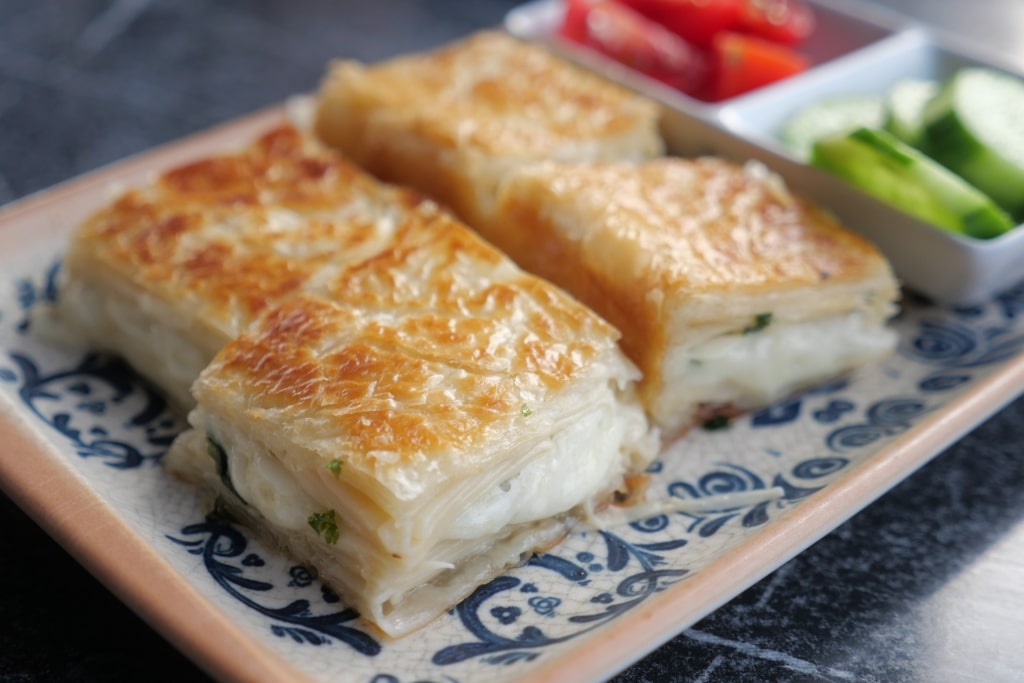
Börek
More a type of Turkish food than a single dish, börek is a baked or fried pastry made with thin layers of phyllo pastry and filled with various ingredients such as cheese, meat, spinach, or potatoes. Think of it like a savory baklava, which is why it is often sold in shops alongside the sweet version.
As well as fillings, it comes in many different shapes, including rolls, spirals or layered pies, and there are regional variations, too. Around Izmir and Kuşadası for instance, boyoz, a type of börek that is typically eaten for breakfast, is popular.
Lahmacun
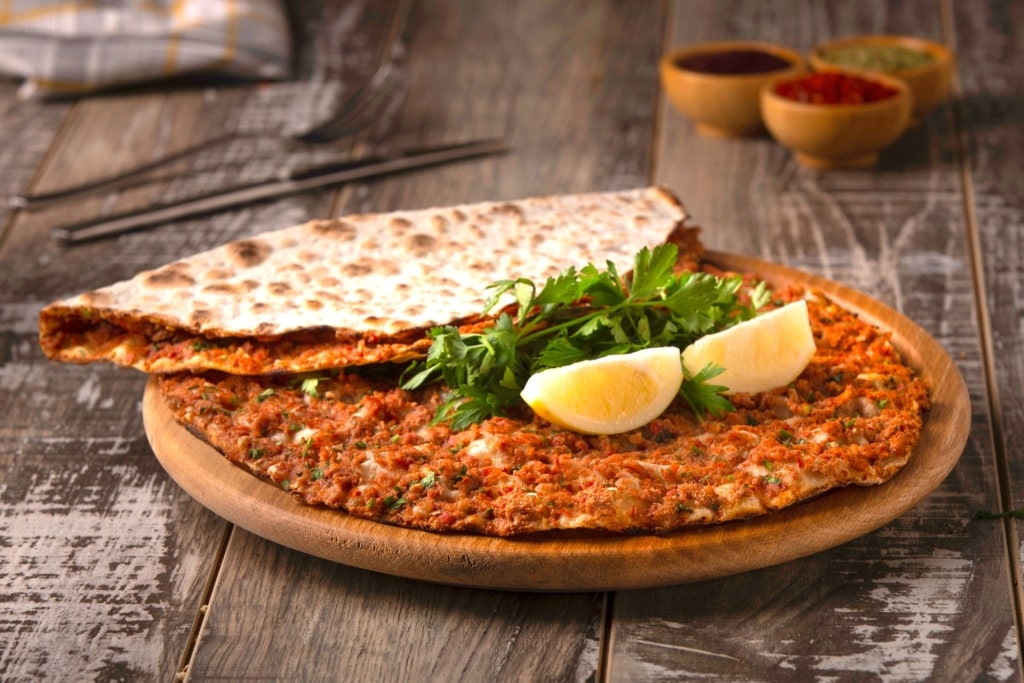
Lahmacun
Known colloquially as “Turkish pizza”, lahmacun consists of a flatbread-style base topped with minced beef or lamb, mixed with finely chopped vegetables, and flavored with herbs and spices including parsley, paprika, and cumin.
Like its Italian cousin, it’s best made in a traditional wood-fired stone oven which gives it a deeper, smokier flavor. While lahmacun can be found in restaurants, it’s really Turkey’s archetypical street food and is served rolled, to avoid meat spillages on the hoof, with a squeeze of lemon.
İçli Pide

İçli Pide
Pide (pronounced pee-deh) is not a million miles from lahmacun. Both consist of a flatbread base and savory toppings and while lahmacun is thinly rolled, pide is a thicker bread and shaped like a boat to hold the toppings in place.
You can also have a wider range of toppings for pide: think tangy feta cheese, spicy sausage, known as sucuk, vegetables including spinach, and eggs, as well as the more ubiquitous ground meats.
Köfte
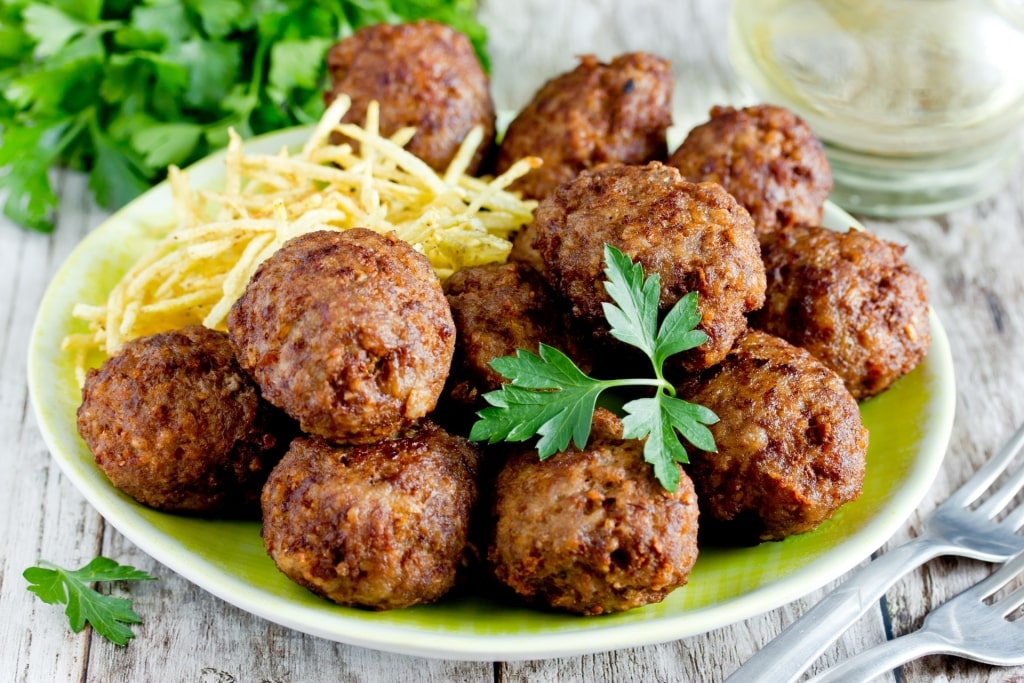
Köfte
The great trade routes of the Middle Ages gave rise to many meatball recipes found across the Middle East and South Asia but few have the enduring appeal of Turkish köfte.
Made from ground meat, typically lamb or beef, and mixed with a variety of herbs and spices, köfte can be shaped into balls, patties, or oblong shapes and can be grilled, baked, or fried, sometimes cooked on a skewer, making a köfte kebab.
The secret to a good köfte comes from three things. The meat must have a relatively high fat content for succulence, as much of the fat drips out in the cooking process. Warming spices include cumin and paprika. Then there’s the amount of time the meat is kneaded and allowed to stand, which means the spices impart more flavor to the final dish.
Simit
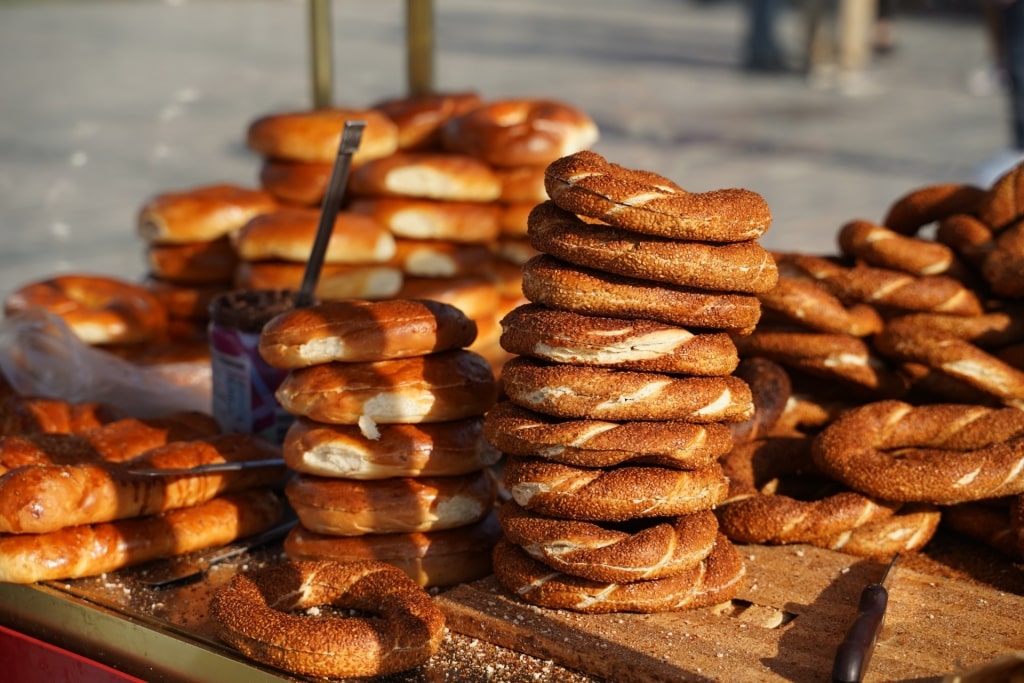
Simit
If you’ve ever had a pretzel from a vendor on the streets of New York, you’re a good way toward knowing what a simit is.
A circular bread ring crusted with sesame seeds and baked to be crispy on the outside and soft inside, simit have been eaten in Turkey since the 16th century and can be found from vendors on the streets of pretty much every town.
They tend to have a slightly nutty flavor thanks to the sesame, but a sweet undertone comes from them often being coated in molasses before baking.
Manti
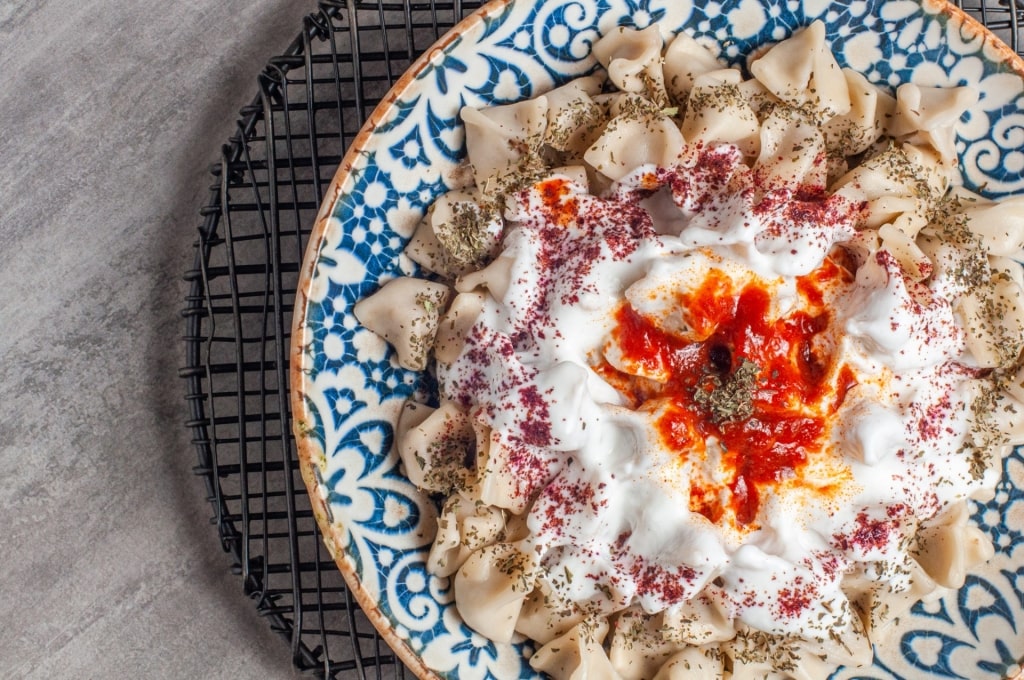
Manti
Another delicious dish and a staple of Turkish food offerings is manti. Likened to dumplings or ravioli and not unlike the Russian piroshki, manti are small boat-shaped dumplings filled with ground meat.
As a dish, manti is thought to have originated in China or Mongolia before variations spread along the Silk Road to Turkey. While there are dozens of variations around the country, the most popular sees the dumplings steamed and eaten with garlic-yogurt sauce and a drizzle of melted butter mixed with red pepper or paprika.
Yaprak Dolma
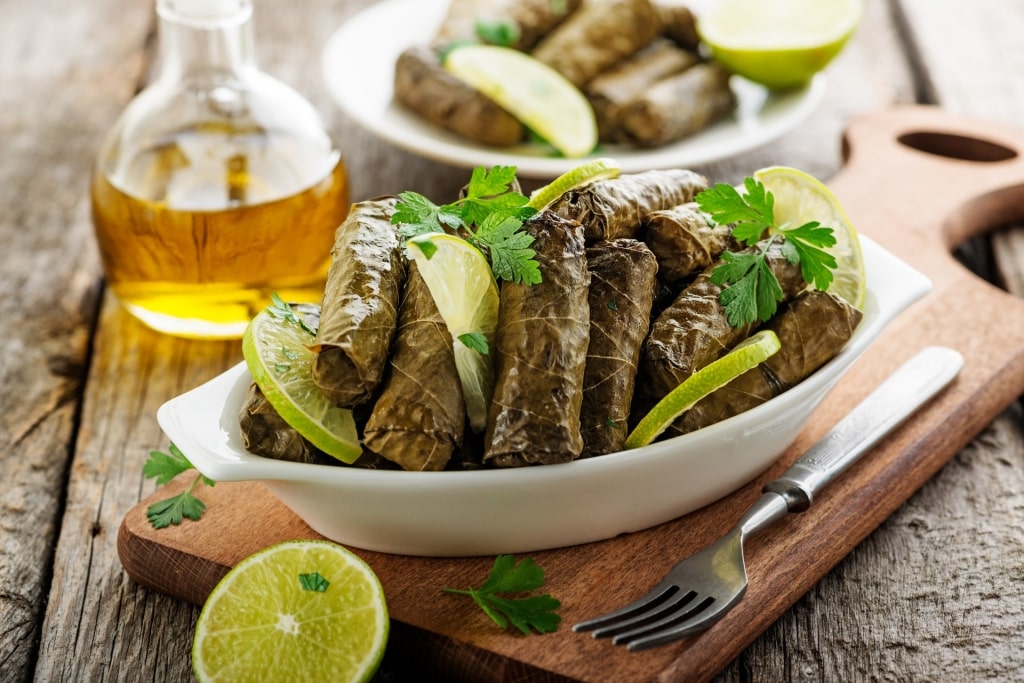
Yaprak dolma
Yaprak dolma or yaprak sarma is another classic Turkey recipe, variations of which are seen in surrounding countries and throughout the Middle East.
More simply known as dolma, this fresh, appetizing dish sees vine leaves stuffed with a mixture of rice and herbs, including dill, mint, and parsley. These small packages are then braised, usually in a lemon-flavored sauce before being served warm as a main course, or cold as part of a meze selection.
Ostensibly a vegan dish, some dolma recipes can be cooked in chicken or meat stock and others call for the addition of ground beef or lamb. So always ask before ordering if you are meat-free and in doubt.
Imam Bayıldı
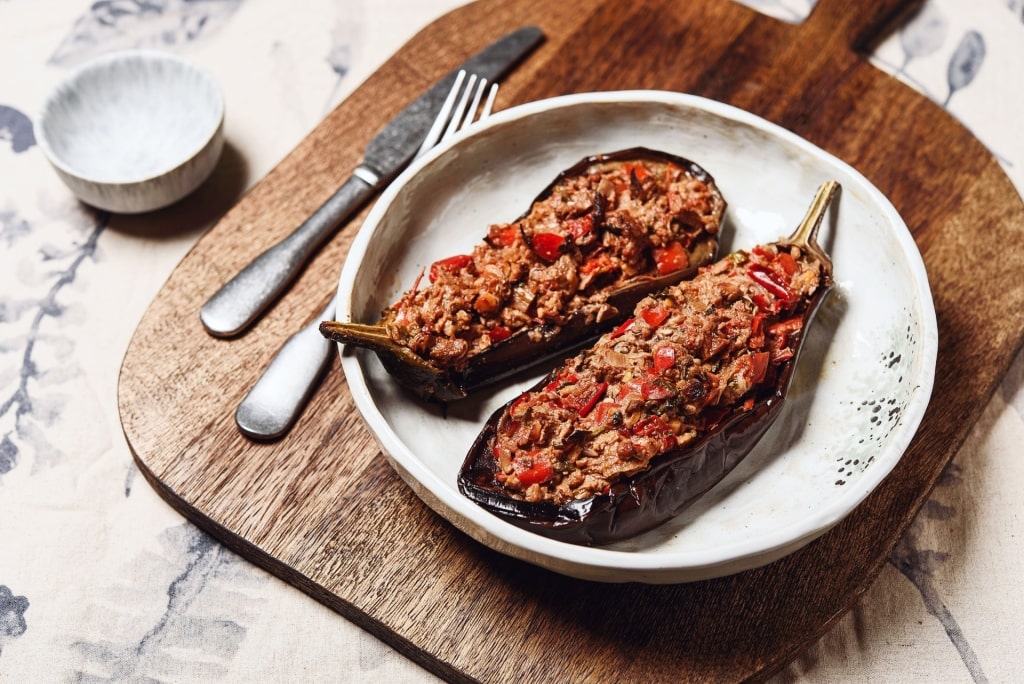
Imam Bayıldı
Literally translated “Imam Bayıldı” means “the imam fainted”, although legend seems to be unsure whether the Muslim cleric lost his senses as the dish he was sampling was so delicious, or because of the cost of olive oil needed to make it.
Either way, Imam Bayıldı is a tasty dish consisting of eggplants stuffed with a savory mixture of onions, garlic, and tomatoes, and then simmered in olive oil that has become a Turkish staple, usually served cold as part of a meze spread.
Ekmek Kadayifi
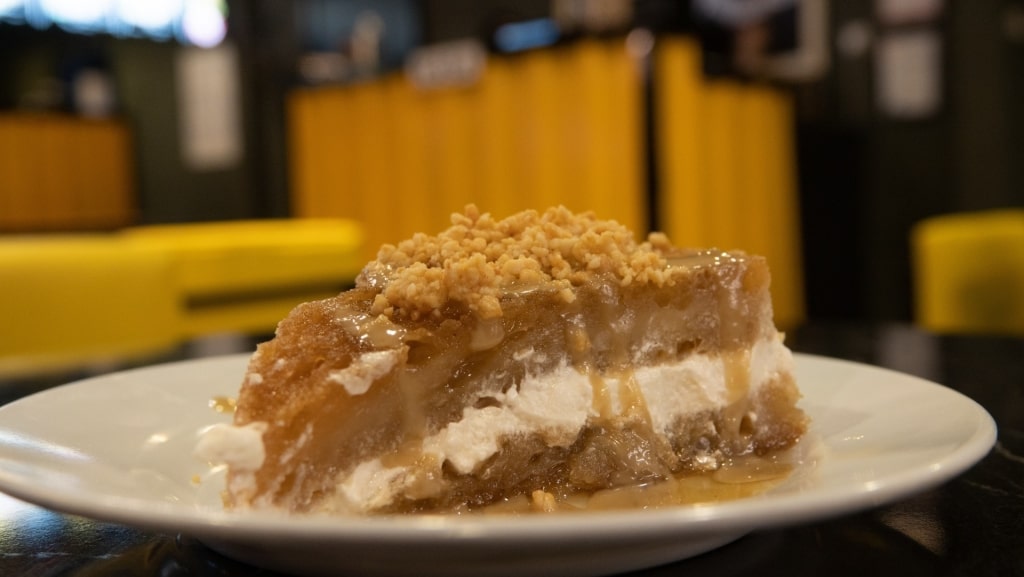
Ekmek Kadayifi
Sweet tooth? Ekmek kadayıfı could well be your thing. A cross between baklava and a bread pudding, it’s made with a special type of bread called ekmek that is often eaten for breakfast.
When dried, it is then soaked with sugar syrup or honey and topped with a thick layer of Turkish clotted cream, called kaymak. While the cream certainly ups the calorie content, its richnes
